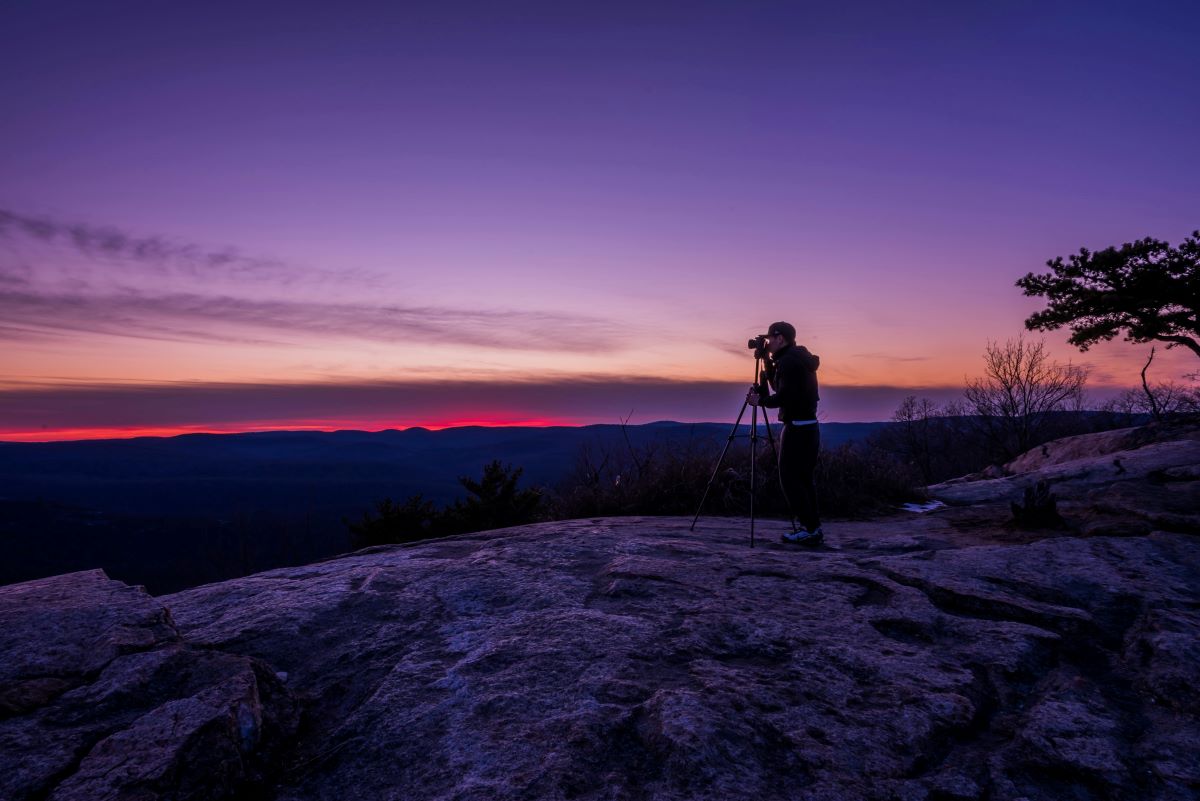How to Capture Stunning Travel Photos in Africa
Africa is a diverse land of culture, wildlife, and incredible landforms — a photographer’s paradise. Whether Kenya’s golden savannahs or Morocco’s colorful souks, there is a different place to take beautiful travel photos at every corner. Whether you are an established imager or a budding camera nerd, this article gives you practical guidelines on how to capture stunning travel photos in Africa.
1. Know Where You’re Going
Do thorough research on your destination before your journey. If you can get a sense of the local culture, climate, and geography, that may give you a sense of the kind of shots you’ll be able to get. For example, the Great Migration in the Serengeti occurs between July and October, making it an unrivaled time to photograph wildlife on the move. The Durbar in Nigeria and colorful festivals in West Africa are also great opportunities for portrait photography.
Learning about the area’s history and traditions will also help guide you in your interactions with locals in a way that enables you to capture authentic, heartfelt moments.
2. Pack the Right Gear
You should have decent equipment that enables you to take high-quality photos. Here’s a cheat sheet of gear essentials for shooting photos in Africa:
- Camera Body: A DSLR or mirrorless camera, and manual settings, allow you more control over your shots.
- Lenses: A multipurpose zoom (such as a 24-70mm) and a telephoto lens (like a 70-200mm) create landscapes and wildlife.
- Tripod: Helpful for low-light or slow shutter shots (i.e., any photos of the Milky Way in Namibia’s deserts).
- Filters: ND filters help with long exposures, polarizing filters reduce glare and enhance colors.
- Spare Batteries & Memory Cards: African adventures can be full of surprises, so it is best to be prepared.
As you pack, pack with a lightweight, weather-resistant camera bag.
3. Become an Expert With Lighting
The lighting can determine if a travel photo is a winner or a loser. In Africa, the golden hour—just after sunrise and just before sunset—provides soft, warm light that enhances landscapes and portraits. At midday, the relentless sun can cause extreme contrasts, but it’s also a great time to play with shadow for creative effect.
If you are shooting wildlife, early morning and late afternoon shots will be best because animals are more active when it’s cooler. Try backlighting for dramatic silhouettes of giraffes, elephants, or acacia trees against the setting sun.
4. Focus on Composition
A well-constituted photo attracts the viewer and brings you a great narrative. In working toward this, remember these tenets:
- Rule of thirds: Divide your frame into thirds vertically and horizontally, capturing your subject on these lines for a more balanced frame.
- Leading Lines: Incorporate elements such as rivers, trails, or borders to usher the viewer’s eyes through the frame.
- Framing: Use elements like tree branches, archways, or windows to create a frame around your subject.
- Depth: Use foreground, middle ground, and background elements to add depth to your photographs.
Before clicking the shutter, always visually scan your frame. Small changes can elevate an average photo to a great one.
5. Connect with Locals
People photography is one of the most satisfying parts of travel photography, and Africa’s variety of cultures offers opportunities galore. But it must be done with respect and sensitivity.
Talk to them, and ask interests in what they are doing. Also, learning some words or phrases in a local language can help you bond with locals. After establishing trust, request permission to take their photos. You’ll find that most people are happy to pose for you — provided that you show them how they look on the screen of your camera.
Candid shots — that is, photos taken of people while they continue with their daily lives — often tell the most honest stories. So be patient and watchful to capture those spontaneous moments.
6. Ethically Capture Wildlife
Wildlife is one of Africa’s greatest draws, and for many photographers, capturing it on camera is a dream. To do this responsibly:
- Maintain A Respectful Distance: Use a telephoto lens so you do not interrupt the animals’ natural behaviors.
- No Flash: Flash photography can scare wildlife and change its behavior.
- Keep to the Park Rules: Stay on established Earth and do as your tour guide or ranger indicates.
By respecting the needs of animals, you’ll not only be safeguarding their habitats, but you’ll also take more real-life and natural photos.
7. Embrace Post-Processing
Editing your photos turns them from good shots to great ones. Programs like Adobe Lightroom and Photoshop provide tools that help you tweak exposure, contrast, and colors to bring the absolute best out of your shots.
When you edit, try to do whatever you can to make the photo better, but do not go overboard. Making very subtle adjustments can give your images a polished and professional look.
8. Stay Safe and Adaptable
Africa’s various environments can be unforgiving, so it helps to be ready. Dress appropriately, shield yourself from the sun, and stay hydrated. If you’re photographing in remote places, keep your equipment secure, and don’t flash around your expensive gear in crowded locations.
Flexibility: The second essential characteristic of travel photography is flexibility. Bad weather, animal migrations, or cultural events may not fit your plans, so remain patient and flexible. A lot of the time, it is the unplanned moments that prove to be the most magical.
9. Tell a Story
Great travel photography isn’t just a beautiful image; it tells a story. Consider the story you want to tell. Is that the life of a Maasai warrior, the immensity of the Sahara Desert, or the mayhem of a busy market in Marrakech? Pick details that deepen your narrative — a child’s laughter, intricate beadwork, footprints in the sand.
Your audience will remember your name by the end of the story you’ve intertwined with your photos.
10. Practice and Persevere
Lastly, never forget that photography is an art, and art needs practice! Not every photo will come out perfectly, and that’s okay! Test different approaches, learn by failing, and challenge yourself to see experience from different angles.
So while journeys to Africa will always differ and provide different opportunities and lessons, you will leave every adventure a better photographer. These tips on how to capture stunning travel photos in Africa are just what you need!
Photographing award-winning travel photos in Africa is a rewarding experience that balances technical skills, creativity, and cultural awareness. By following these tips and embodying the spirit of exploration, you’ll come home with a trove of memories and images that truly capture the magic of this remarkable continent. Happy shooting!
📞 Call/WhatsApp: +254 748 057 500
📧 Email: info@pleasantadventure.com
🌍 Website: www.pleasantadventure.com
FAQs
1. What is the best time of day for taking travel photos in Africa?
The golden hours—just after sunrise and before sunset—provide soft, warm lighting that enhances landscapes and wildlife shots.
2. What camera gear should I bring for an African safari?
A DSLR or mirrorless camera with a zoom lens (200-400mm), a wide-angle lens, and a tripod is ideal for capturing wildlife and landscapes.
3. How can I take great wildlife photos on safari?
Use a fast shutter speed (1/1000s or higher), shoot in burst mode, and focus on the eyes of the animal for sharp, expressive shots.
4. What settings should I use for photographing African landscapes?
Use a small aperture (f/8–f/16) for a deep depth of field, low ISO for minimal noise, and a tripod to capture sharp, detailed landscapes.
5. How do I take amazing portraits of locals while traveling in Africa?
Always ask for permission, use natural light, and shoot with a wide aperture (f/2.8–f/5.6) to create a soft background blur that highlights the subject.
6. How can I capture the vibrant colors of Africa’s culture and markets?
Use a polarizing filter to enhance colors, shoot at eye level for immersive compositions, and focus on patterns, textures, and local attire.
7. What’s the best way to photograph African sunsets and sunrises?
Use a low ISO (100–200), a tripod for stability, and underexpose slightly to capture the rich colors and avoid overexposed highlights.
8. How can I avoid blurry photos when shooting on the move?
Increase your shutter speed (1/500s or faster), use image stabilization, and rest your camera on a stable surface if needed.
9. What are the best African destinations for travel photography?
Top destinations include Serengeti (Tanzania), Victoria Falls (Zambia/Zimbabwe), Maasai Mara (Kenya), the Sahara Desert, and Cape Town (South Africa).
10. How can I protect my camera gear while traveling in Africa?
Use a waterproof camera bag, bring a lens cleaning kit, and protect gear from dust by keeping it in a sealed bag when not in use.

